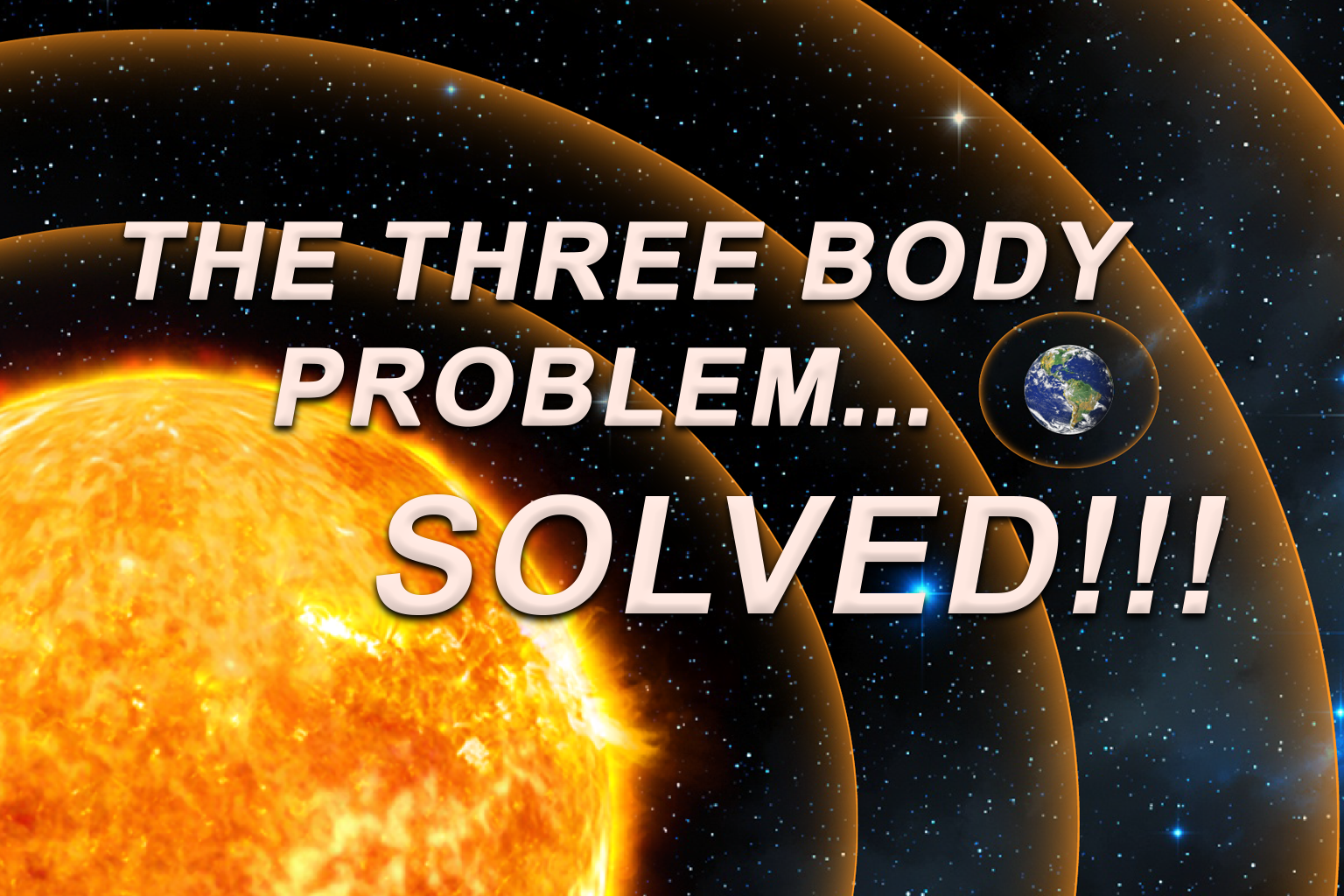Abstract
This paper presents a novel approach to the three-body problem by redefining gravitational interactions as a function of magnetosonic waves, Langmuir oscillations, and the Bjerknes force in a plasma medium. We propose that planetary stability is achieved through wave interactions rather than traditional Newtonian or relativistic gravitational models. Magnetosonic waves, generated by the Sun’s rotation and plasma activity, establish standing wave patterns that regulate planetary orbits. The Solar Induction Dynamo, defined as the Sun’s influence on planetary rotation, core activity, and induced magnetism via plasma wave interactions and Lenz’s Law, is sustained by Birkeland currents, ELF (Extremely Low Frequency) waves, ULF (Ultra Low Frequency) waves, and Alfvén waves, which provide the dynamic medium in which these magnetosonic waves propagate and maintain stability. By integrating Bjerknes force principles into planetary magnetospheres and ionospheres, we demonstrate how resonance between wave-plasma structures contributes to orbital stability and motion.
1. Introduction
The classical three-body problem has remained a challenge in astrophysics due to the chaotic and non-integrable nature of gravitational equations in multi-body systems. Traditional solutions rely on Newtonian mechanics or relativistic perturbative models, which fail to fully account for the stability of planetary orbits. This study presents a new framework where planetary interactions are governed by plasma waves and fluid dynamics, using concepts from magnetohydrodynamics (MHD) and plasma cosmology.
Our approach builds upon the hypothesis that planetary orbits are stabilized through:
- Magnetosonic waves and Langmuir oscillations, which generate standing wave structures that guide planetary motion.
- The Bjerknes force applied to planetary magnetospheres and ionospheres, where plasma “bubbles” form resonance structures that regulate planetary stability.
- The Solar Induction Dynamo, which sustains planetary rotation, core activity, and magnetic induction via plasma wave interactions and Lenz’s Law.
2. The Bjerknes Force in a Plasma Medium
The Bjerknes force describes the interaction between oscillating bubbles in a fluid, producing either attraction or repulsion. Traditionally applied to acoustics, this principle can be extended to plasma physics, where planetary magnetospheres and ionospheres function as “bubbles” in the solar plasma medium.
2.1 Plasma Bubble Interactions
- Planetary magnetospheres and ionospheres serve as resonant cavities within the solar plasma.
- Magnetosonic waves act as an external oscillatory driver, exerting periodic pressure variations on these plasma bubbles.
- Bjerknes forces emerge between planets due to synchronized wave interactions, stabilizing their orbital positions.
This model supports the hypothesis that planetary alignment and orbital positioning are dictated by resonance between magnetosonic standing waves and planetary plasma bubbles, rather than conventional gravity alone.
3. Standing Wave Formation Through Magnetosonic and Langmuir Waves
Magnetosonic waves, generated by the Sun’s rotation and the continuous, violent explosions of plasma caused by magnetic reconnection, spicules, and large-scale turbulent energy release, propagate throughout the heliosphere, maintaining a persistent oscillatory wave structure in the plasma. These waves establish standing wave structures in the plasma, where planetary bodies naturally align.
3.1 Standing Waves and Orbital Stability
- The Sun’s rotation produces consistent wave oscillations, forming standing wave nodes in the heliosphere.
- Planets settle into these nodes, maintaining stable orbits due to their resonance with magnetosonic waves.
- Langmuir waves regulate plasma density, ensuring the persistence of these standing wave patterns.
This process eliminates the need for dark matter or spacetime curvature, replacing them with observable plasma wave interactions
4. The Role of the Solar Induction Dynamo: Birkeland Currents, ELF, ULF, and Alfvén Waves
The Solar Induction Dynamo plays a critical role in sustaining the plasma system that allows magnetosonic waves to regulate planetary orbits.
4.1 Key Contributors to the Solar Induction Dynamo
- Birkeland CurrentsThese large-scale electrical currents flow between the Sun and planets, transferring energy through magnetic field lines. They power planetary magnetospheres and contribute to core activity via induced currents.
- ELF and ULF WavesThese low-frequency waves sustain planetary magnetic fields by inducing currents through Lenz’s Law. They help regulate planetary magnetospheres and contribute to auroral activity.
- Alfvén WavesThese MHD waves propagate along magnetic flux tubes, linking solar wind activity to planetary ionospheres. They transfer energy into planetary systems, contributing to core activation and rotation maintenance.
5. The Role of Ionospheric Resonance in Orbital Stability
Even in the absence of a global magnetosphere, a planetary ionosphere can serve as a resonant cavity, interacting with solar wave phenomenaIonosphere resonance.
5.1 Ionosphere-Driven Stability
- Planets with weak or absent magnetospheres, such as Venus or Mars, rely on ionospheric resonance to maintain their orbital positions.
- Plasma gradients in the ionosphere generate equivalent Bjerknes forces, facilitating stability in planetary motion.
- Langmuir waves within the ionosphere adjust electron densities, allowing dynamic synchronization with solar-driven magnetosonic waves.
6. Theoretical and Empirical Implications
This model challenges existing gravitational theories while providing empirically testable predictions:
6.1 Testable Predictions
- Planetary orbits should correlate with magnetosonic standing wave nodes, observable through space plasma measurements.
- Wave interference effects should be detectable in planetary ionospheric and magnetospheric data from spacecraft missions.
6.2 Applications Beyond Planetary Motion
- Aerospace Engineering: Wave-based propulsion systems inspired by Bjerknes forces.
- Space Exploration: Use of plasma-based wave mechanics for spacecraft stabilization.
7. Conclusion
This paper presents a wave-driven solution to the three-body problem, emphasizing the role of magnetosonic waves, Langmuir oscillations, and the Bjerknes force in planetary stability. Rather than treating planetary motion as a product of gravitational warping, this model describes a structured, wave-based interaction system that defines stable orbits through resonant plasma mechanics.
These findings suggest a paradigm shift in astrophysical modeling, where plasma physics and wave mechanics supplant classical gravitational explanations for planetary motion.
References
- Magnetosonic Waves and Planetary Orbits Harnett, E. M., & Winglee, R. M. (2003). Three-dimensional multi-fluid simulations of ionospheric loss at Mars from nominal solar wind conditions to extreme conditions. Journal of Geophysical Research: Space Physics, 108(A12), 1462. https://doi.org/10.1029/2003JA010014
- Solar Induction Dynamo and Plasma Medium Heikkila, W. J. (2011). Earth’s Magnetosphere and Dynamo. Physics of the Earth’s Space Environment, 301–345. https://doi.org/10.1007/978-3-642-18619-5_8 Singer, H. J., Matheson, L. N., Grubb, R. N., Newman, A. L., & Bouwer, S. D. (1996). Monitoring Space Weather with the GOES Magnetometers. Proceedings of SPIE, 2812, 299-308. https://doi.org/10.1117/12.254077
- Bjerknes Force and Planetary Magnetospheres Xia, H., Francois, N., & Punzmann, H. (2020). Wave-driven Particle Self-organization. Nature Communications, 11(1), 698. https://doi.org/10.1038/s41467-020-14505-5
- Langmuir Oscillations in Plasma Ergun, R. E., Andersson, L., Main, D., Su, Y.-J., Newman, D. L., Goldman, M. V., Carlson, C. W., McFadden, J. P., & Mozer, F. S. (2001). Parallel electric fields in the upward current region of the aurora: Indirect and direct observations. Physical Review Letters, 87(4), 045003. https://doi.org/10.1103/PhysRevLett.87.045003
- Standing Waves and Orbital Stability Engebretson, M. J., Glassmeier, K.-H., & Stellmacher, M. (1998). The dependence of high-latitude Pc5 ULF waves on solar wind velocity and on the phase of high-speed solar wind streams. Journal of Geophysical Research: Space Physics, 103(A11), 26159–26172. https://doi.org/10.1029/97JA03143
- Wave-Particle Interactions Ma, Q., Li, W., Thorne, R. M., Bortnik, J., Nishimura, Y., & Angelopoulos, V. (2016). Electron scattering by magnetosonic waves in the Earth’s inner magnetosphere. Journal of Geophysical Research: Space Physics, 121(7), 5522–5537. https://doi.org/10.1002/2016JA022583
- Alfvén Waves and Magnetospheric Structure Hasegawa, A., Chen, L., & Okuda, H. (1976). Kinetic Processes in Plasma Heating by Resonant Mode Conversion of Alfvén Wave. The Physics of Fluids, 19(12), 1924. https://doi.org/10.1063/1.861310
- Ionospheric Resonance and Orbital Stability Zhelavskaya, I. S., Spasojevic, M., & Shprits, Y. Y. (2016). Automated determination of electron density from upper-hybrid and whistler mode waves observed by Van Allen Probes. Journal of Geophysical Research: Space Physics, 121(5), 4618–4635. https://doi.org/10.1002/2016JA022594
- Plasma Waves in Planetary Magnetospheres Gurnett, D. A., & Bhattacharjee, A. (2005). Introduction to Plasma Physics with Space and Laboratory Applications. Cambridge University Press. https://doi.org/10.1017/CBO9780511809274
- Wave-Wave Interactions in Space Plasmas Balikhin, M. A., Gedalin, M., Walker, S. N., Schwartz, S. J., Hobara, Y., Krasnoselskikh, V. V., & Bale, S. D. (2008). Experimental determination of the dispersion of waves observed upstream of a quasiperpendicular shock. Geophysical Research Letters, 35(7), L07104. https://doi.org/10.1029/2007GL032732


Leave a Reply